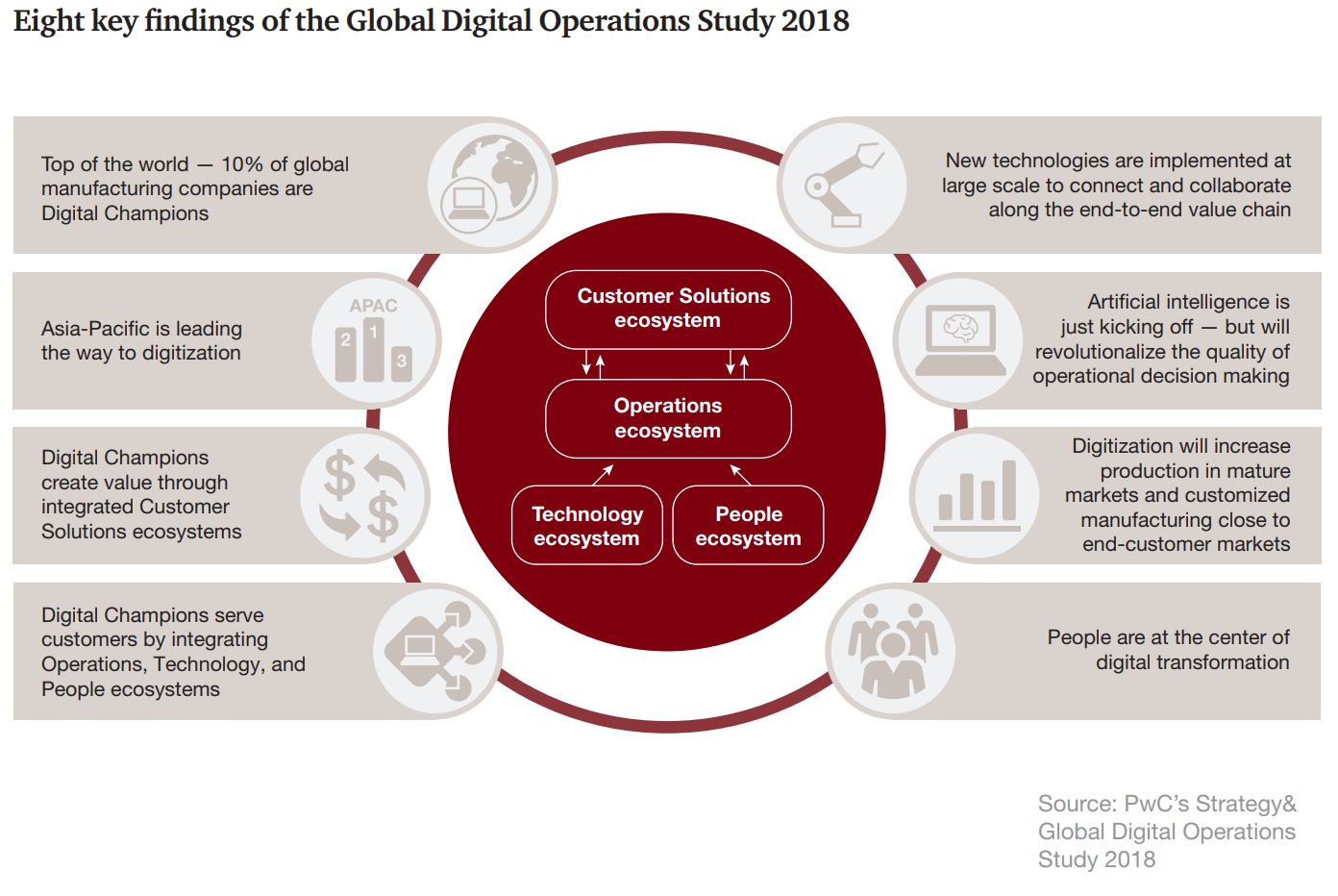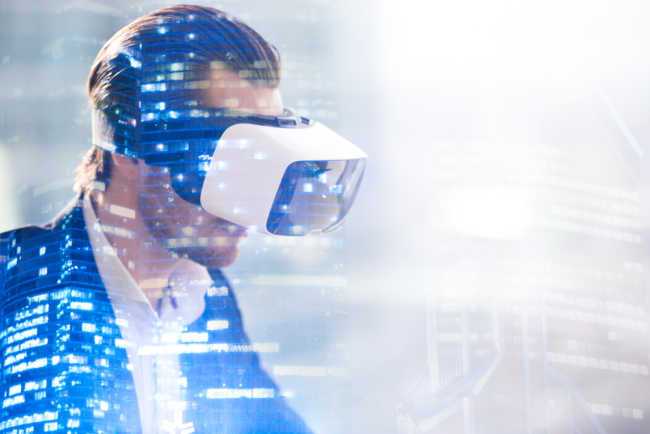The key role of AR in Industry 4.0 for Manufacturing: Part 2
This post is the second of a 3-part series. Check back in next week for the conclusion of this series.
In the first part of this series – The key role of Augmented Reality in Industry 4.0 for Manufacturing: Part 1 – we looked at the fundamental ideas behind what has been called “Industry 4.0” – and how a host of new technologies are helping manufacturing companies transform themselves.
One of the key underlying technologies for Industry 4.0 – identified in the 2018 Global Digital Operations Study that we referenced in the first part of this series – is Augmented Reality (AR).
In this second part of the series, we will look at how AR technologies integrate with many of the other key components of an overall global digital operations strategy (including Internet of Things (IoT) devices and Big Data) to enable a complete change to the way manufacturing companies do business.
The first thing to recognize in the development of a such a strategy is just how interlocking all the pieces are when you look at global digital operations. In an Augmented Reality scenario, the study suggests the first interlocking point with AR may be when “new technologies are implemented at large scale to connect and collaborate along the end-to-end value chain”.

Framework from 2018 Global Digital Operations Study
AR can empower and enable manufacturing workers to better collaborate using see-what-I-see video calling, work instructions and live photo and video annotations. Also called out here is artificial intelligence, which can drive predictive maintenance and machine learning in a factory.
Manufacturing companies will typically have a lot of historical data about the reliability of their elements and processes – and will use that data to establish a predictive maintenance schedule. If you have data that tells you that doing maintenance on a given part of a manufacturing line every six weeks will lead to fewer breakdowns and failures than if you do that maintenance every two months, you will learn the lessons the data has to offer and make that change to maintenance schedules. That data may also reveal to you why it is that the line needs so much maintenance.
Similarly, if you use IoT sensors to provide even more data about what is happening throughout the manufacturing facility – and get a real-time, holistic view of where the problems lie – you’ll be able to have much more information to tackle those problems quickly and efficiently.
Then, when you bring Augmented Reality solutions into the picture, you will have an even clearer picture of the issues you’re trying to resolve. In this scenario, you may have a service technician who is sent in to fix or maintain some part of the manufacturing line. And that technician is wearing smart glasses and using Atheer’s AR Management Platform. More about How AR systems guide industrial operators in preventive maintenance activities
So the service technician will be able to pull up historical reliability data, information about previous system breakdowns – and any data available from relevant IoT devices throughout the manufacturing facility – right from within the smart glasses and use that information to troubleshoot the problem.
If all that doesn’t provide enough information to complete the repair or maintenance task, the technician can also use the smart glasses to do a “see what I see” video conference call with remote experts who can provide further insight.
Further reading: Industry 4.0 demands new solutions for manufacturing
In the third part of this series, we’ll take a closer look at the kinds of future capabilities that augmented reality solutions will enable as organizations continue their journey to becoming digital industrial enterprises.
Find out more about Augmented Reality in IoT from an interview with Ian Kanski, CTO of UrsaLeo.
![]() This article was written by Geof Wheelwright, a technology journalist for more than 25 years (including work for The Times of London, the Financial Times, Newsweek, Time Magazine, The Guardian and trade publications such as Computerworld and Geekwire) and is now the Director of Marketing Communications for Mountain View, California-based Atheer, Inc.
This article was written by Geof Wheelwright, a technology journalist for more than 25 years (including work for The Times of London, the Financial Times, Newsweek, Time Magazine, The Guardian and trade publications such as Computerworld and Geekwire) and is now the Director of Marketing Communications for Mountain View, California-based Atheer, Inc.



